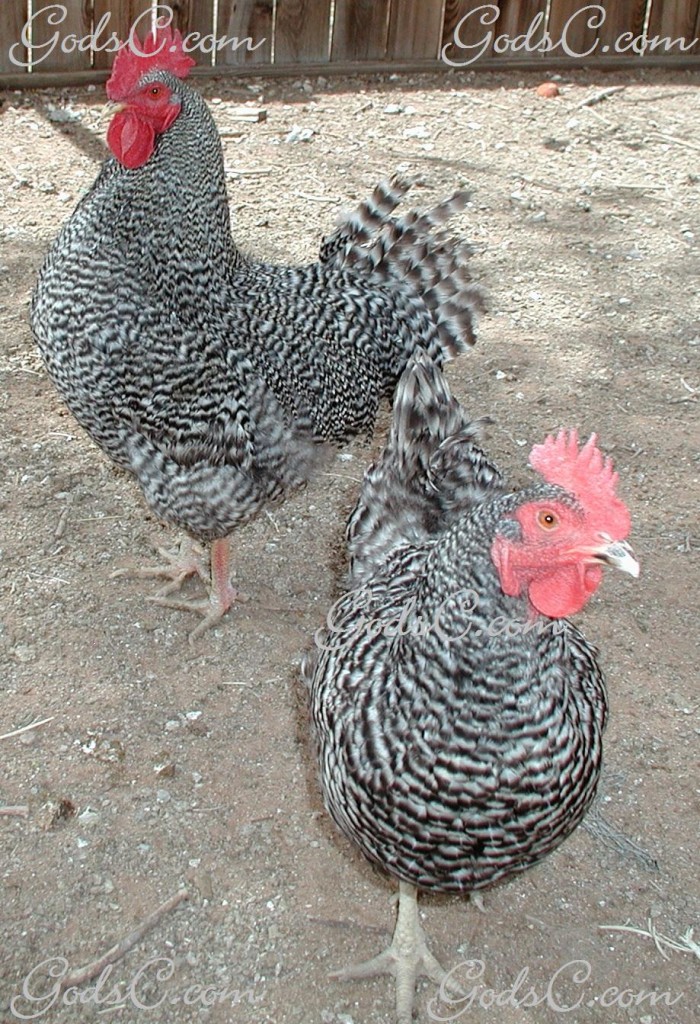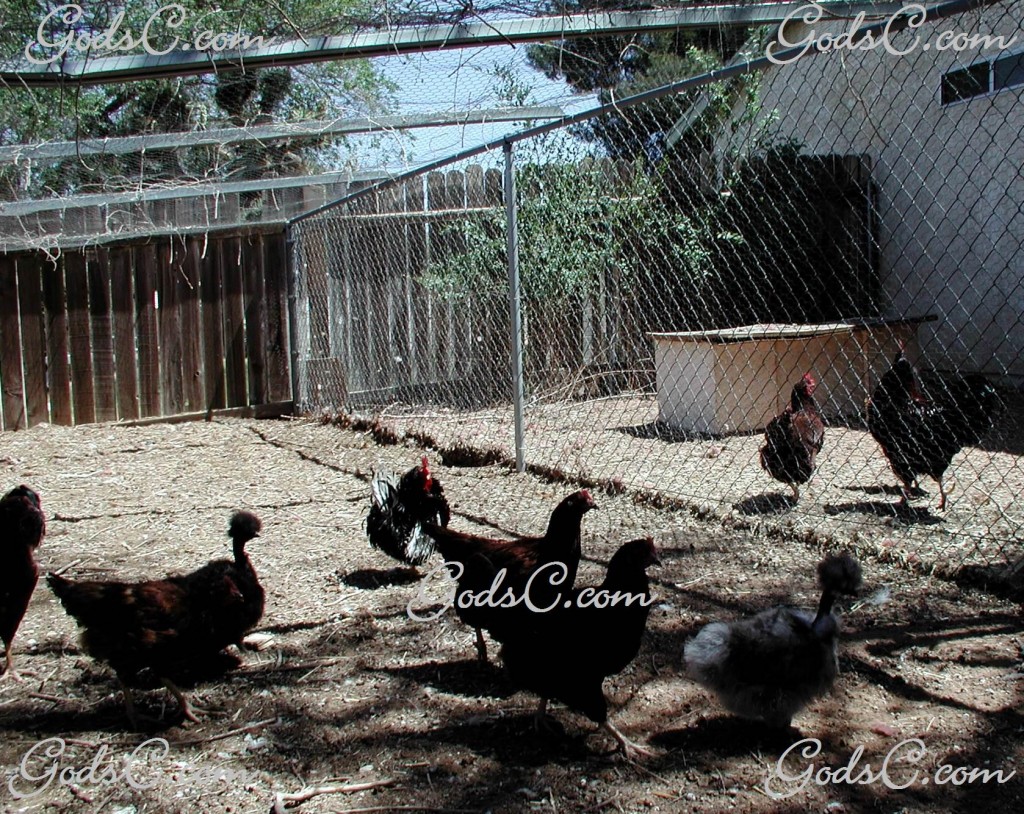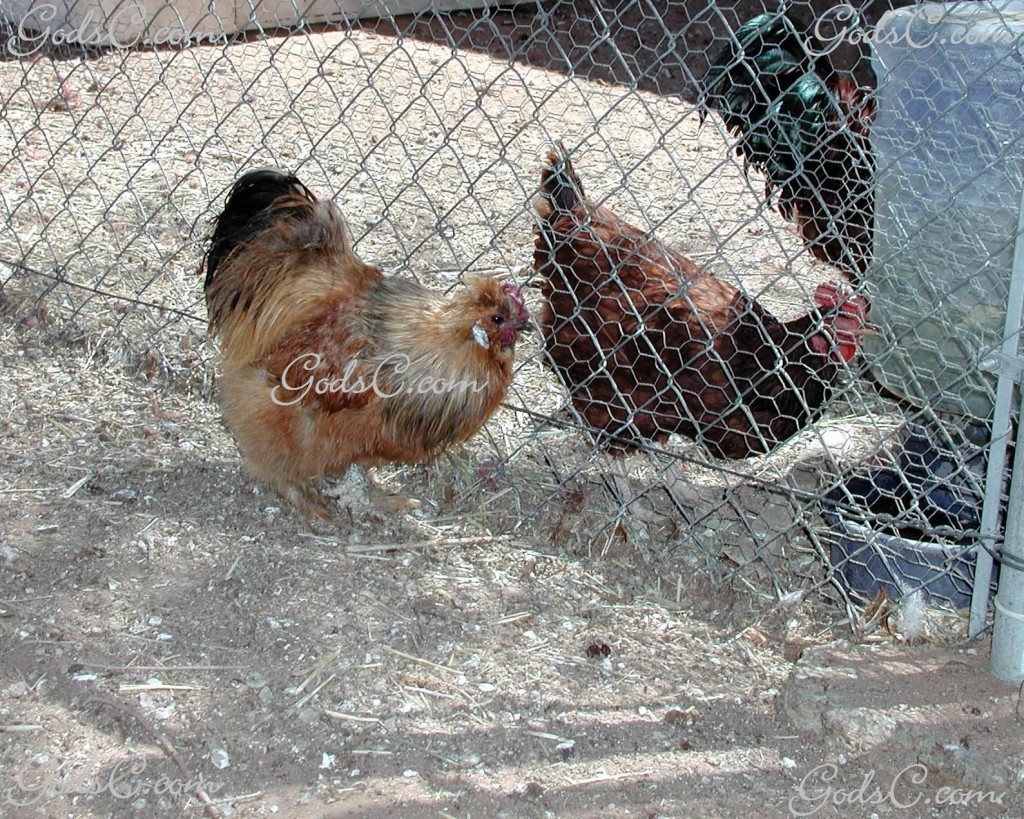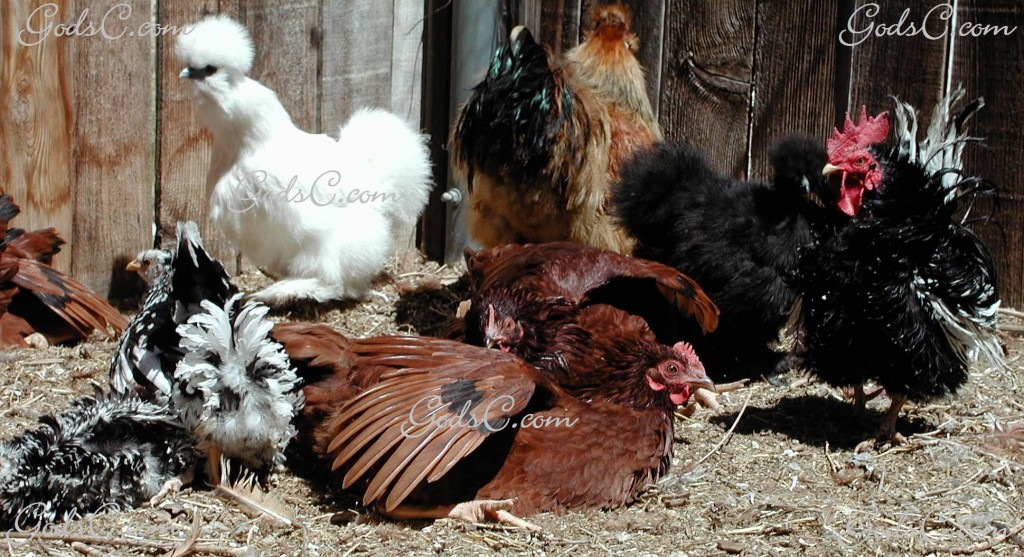Introducing New Chickens Into Your Flock
Originally posted on 4/20/13

Weekly Bible Verse: James 3:7 For every kind of beast and bird, of reptile and creature of the sea, is tamed and has been tamed by mankind.
Read these verses 8-10 8 But no man can tame the tongue. It is an unruly evil, full of deadly poison. 9 With it we bless our God and Father, and with it we curse men, who have been made in the similitude of God. 10 Out of the same mouth proceed blessing and cursing. My brethren, these things ought not to be so. (End of verses)
We (humans) are special above everything else in the world, which God has created, because we are the only ones created in the similitude of God. How it must greave God when we say a person is ugly. If you are ever tempted to through out insults at someone and say they are ugly, just remember that person is made in the image of God just like you. We must learn to tame our tongue so we will use our words for good and not evil.
Creature Tip: Some flocks of chickens don’t take kindly to outsiders, meaning chickens from outside their flock. For example it’s kind of like a group of people, which are friends, thinking they are better than other people. This group of friends won’t allow other people into their group. Now back to our flock of chickens, it’s a little like the same thing with a flock of chickens. They don’t want to allow other birds into their flock/group of friends. God created humans with intelligence and gave us dominion over the animals including chickens. You will need to use some of that intelligence that God gave you to solve this problem and get your chickens to accept birds from outside their flock. In this creature tip I will talk about how to introduce new birds into your flock of chickens, but I will warn you that some flocks can be difficult to work with. If you have trouble, God even cares about your little chickens, just pray about it and you can posted your question here too if you need more help.
Step 1. Some flocks easily accept new birds, especially younger flocks. On the other hand flocks that have been established together longer will fight newcomers and can even kill them. Caution and good supervision must always be used when adding new birds to any flock. Usually it is the new chickens that get picked on by the existing chickens. This is why it is usually better to introduce several birds into a flock rater than a single bird. If multiple chickens are introduce to a flock at once your existing chickens will have several birds to meet and not just one bird. If you introduce just one bird to your flock, your existing flock will gather around the single new comer and if a fight brakes out the single chicken will not stand a chance against an entire flock.

Step 2. You will need to let your old flock get acquainted with the new birds but this should be done in a safe way so that none of the birds get injured. One of the best ways to do this is cage the new birds separately next to your old flock so they can all see each other. It is best to make a new coop/cage with no big holes. You don’t want birds placing their heads through the holes into the other pen and getting pecked at. When making this separate coop/cage you can divide your regular coop into two sections or just add on to the outside of the existing coop to make a separate coop/cage. Be sure both coops/cages have a shelter for the birds to get out of the rain, cold, or heat.
Photo below shows 2 chickens in 2 different coops. Notice that the dividing chain link fence is covered with chicken wire; this is to prevent any bird from placing its head through the larger chain link holes.

Step 3. After about 1-3 weeks, depending on your flock, you can now do one of two things. Options number one, you can let both coop doors open into your back yard (if the chickens will be safe from predators). What this will do is allow all the birds to be together in a larger area so if a fight brakes out the new birds have a larger area to escape into and they won’t be easily cornered. Your old birds should also be more eager to go explore the backyard, assuming they are accustom to the backyard, and because they will be busy exploring they will take less notice of the new birds. At night you should house the birds separately back in their own coops and in the morning let them out again. After about a week or more you should be able to house all your birds together in one coop. Here is option number two. Swap coops with your birds by placing the old birds in the new coop and the new birds in the old coop. Often a flock will become territorial of their coop. By placing the new birds in the coop you plan on keeping all your birds in, will allow the new birds to become more confident in that coop. Also your old birds will not be so territorial and accept the new birds a little better. If you choose to go with this option and swap coops/cages you should wait again 1-3 weeks before adding your old birds back to their original coop together with the new birds. You can also combined a little of both options one and two together if needed.
Photo below shows a flock of chickens made up of a variety breeds and includes chickens ranging in age from 3 months–4 years old. They are all living peacefully together and enjoying the warm sunshine.

Things you should also know
These 3 steps above may not always work with every flock as several things come into play. Here is a little more info listed below.
Age, Size, and Breed: Age and size differences can make things difficult as older birds tend to pick on younger birds and larger birds tend to pick on the smaller birds. Also breed can make a difference because some breed are more aggressive, and others are more peaceful so watch and make sure your gentle chickens aren’t getting beat up by other more aggressive birds.
Roosters: Roosters do NOT like to live with other roosters and sometimes even fight to the death. Only keep one rooster with your flock of hens. There are a few breeds of roosters that sometimes get along with other roosters but it not only depends on the breed but also the personalities of the roosters.
Bleeding: Should one of your chickens get pecked at to the point where it starts to bleed, you should remove it from the flock right away. When a bird is bleeding from being pecked at by another bird, usually other birds will follow suite causing the chicken to bleed even more. Separate him or her immediately and apply pressure if needed and clean up the bird. You can try returning the chicken back to the flock in a few days but if the other birds start pecking on the chicken again you need to keep it separate until it heels fully. In the meantime you should place the injured chicken in view of the other birds, if it dose not stress the injured chicken out, so they can become familiar with each other. This will make the chickens return back to the coop a lot easier because they will be more accustomed to each other.
Food and Water: Make sure food and water are placed in an open area so the new birds can have easy accesses and not feel cornered by the other birds when eating and drinking.
In closing: Because there are so many variables when adding new birds to a flock, you will need to use your imagination to come up with the best plan for your flock. But one thing will always be the same when adding new birds into a flock and that is; always use caution by removing chickens if fighting becomes too aggressive and be sure you have plenty of time to supervise. So go ahead and use the info above to get your plan together for your flock and feel free to leave a comment about what has worked for you so others can lean even more.
